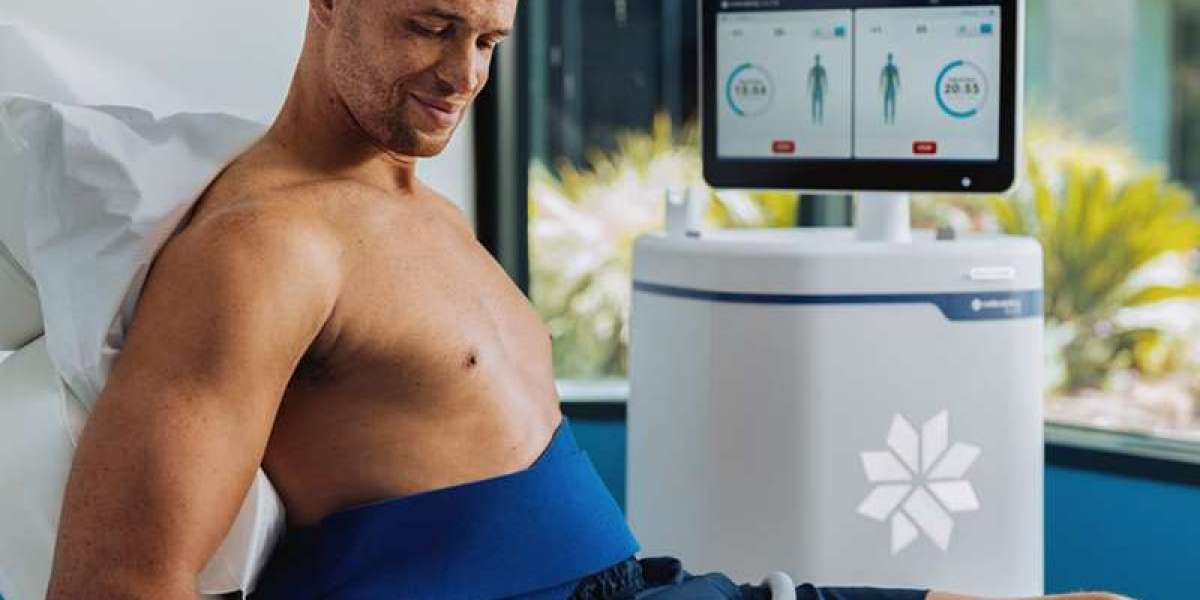Fat freezing, or cryolipolysis, is a popular non-invasive treatment designed to target stubborn fat pockets and contour the body. While it’s considered a safe and effective procedure, like any cosmetic treatment, fat freezing can come with some side effects. Knowing what to expect during and after the treatment can help you prepare and make an informed decision.
What Is Fat Freezing?
Fat freezing is a non-surgical cosmetic procedure that uses controlled cooling to target and destroy fat cells in specific areas of the body. The cold temperature crystallises the fat cells, which triggers their natural death. Over the weeks following treatment, the body’s lymphatic system gradually eliminates the dead cells, resulting in a slimmer, more contoured appearance.
The procedure is FDA-approved and widely recognised for its safety when performed by qualified practitioners using approved devices. It’s particularly effective for reducing fat in areas like the abdomen, thighs, arms, and double chin.
What Happens During a Fat Freezing Treatment?
During a fat freezing session, a gel pad is applied to the treatment area to protect the skin. A specialised applicator is then placed on the area, delivering controlled cooling to the fat cells. You may feel a pulling or tugging sensation as the applicator adheres to the skin, followed by an intense cold that subsides as the area becomes numb.
The procedure typically lasts between 35 and 60 minutes, depending on the treatment area. Afterward, the practitioner may massage the treated area to break up the frozen fat cells and stimulate circulation.
Common Side Effects of Fat Freezing
While fat freezing is non-invasive and considered low-risk, it’s normal to experience some mild side effects during and after the procedure. These are typically temporary and resolve on their own within a few days or weeks.
Redness
Redness is one of the most common side effects of fat freezing. The skin in the treated area may appear flushed or slightly irritated due to the cold exposure and suction from the applicator. This redness usually fades within a few hours after the treatment.
Swelling
Swelling in the treated area is another common side effect. It occurs as a natural response to the cold and suction applied during the procedure. Swelling typically subsides within a few days but can last up to a week for some individuals.
Bruising
The suction from the applicator may cause minor bruising, particularly in areas with thinner skin or sensitive tissue. Bruising is temporary and usually resolves within a week or two.
Numbness or Tingling
The treated area may feel numb or tingly after the procedure, as the cold temperature affects nerve endings. This sensation is usually temporary and resolves on its own within a few days or weeks.
Firmness or Tightness
Some individuals report a firm or tight feeling in the treated area immediately after fat freezing. This is caused by the crystallisation of fat cells and typically subsides as the body processes the destroyed cells.
Sensitivity to Touch
The treated area may feel tender or sensitive to touch for a few days following the procedure. This is a normal reaction to the treatment and should resolve quickly.
Mild Discomfort
While fat freezing is not considered painful, some people experience mild discomfort during the procedure or in the days afterward. This may include soreness or a cramping sensation in the treated area.
Rare Side Effects of Fat Freezing
Although uncommon, fat freezing can sometimes cause more significant side effects. These are rare and typically occur when the procedure is not performed correctly or when using unapproved devices.
Paradoxical Adipose Hyperplasia (PAH)
Paradoxical adipose hyperplasia is a rare side effect where the treated area becomes larger instead of smaller. This occurs when the fat cells respond abnormally to the cooling process. PAH is more common in men and can be corrected with additional treatments or liposuction.
Skin Changes
In rare cases, individuals may experience changes in skin texture, such as dimpling or unevenness in the treated area. This is usually temporary but may require follow-up treatments to correct.
Allergic Reactions
Some people may have an allergic reaction to the gel pad used during the procedure. If you have a history of skin allergies, inform your practitioner during your consultation.
Managing Side Effects After Fat Freezing
Most side effects of fat freezing are mild and temporary, but there are steps you can take to manage them and ensure a smooth recovery:
Apply Ice or Cold Packs: If you experience swelling, redness, or tenderness, applying an ice pack can help reduce inflammation and provide relief.
Wear Loose Clothing: Avoid tight clothing that may irritate the treated area or increase discomfort.
Stay Hydrated: Drinking plenty of water helps your body eliminate the destroyed fat cells more efficiently.
Avoid Strenuous Activities: Give your body time to recover by avoiding heavy exercise for 24-48 hours after the treatment.
Follow Aftercare Instructions: Adhere to any post-treatment guidelines provided by your practitioner to optimise results and minimise side effects.
When to Contact Your Practitioner
While most side effects resolve on their own, it’s important to monitor your body and contact your practitioner if you experience:
Persistent swelling, redness, or discomfort that lasts longer than two weeks.
Signs of infection, such as increased pain, warmth, or pus in the treated area.
Severe or unusual side effects, such as paradoxical adipose hyperplasia.
Your practitioner can assess your symptoms and recommend appropriate follow-up care if needed.
Are Fat Freezing Side Effects Worth It?
For most individuals, the mild and temporary side effects of fat freezing are outweighed by the benefits of the procedure. Fat freezing offers a safe and effective way to reduce stubborn fat without the risks, downtime, or recovery associated with surgical options like liposuction. Many people find the side effects manageable and are pleased with the gradual, natural-looking results.
Who Is Fat Freezing Best For?
Fat freezing is ideal for individuals who are near their target weight but struggle with stubborn fat pockets that don’t respond to diet and exercise. It’s important to note that fat freezing is not a weight-loss solution but a body contouring treatment.
Ideal candidates are in good overall health, have realistic expectations, and are looking for a non-invasive alternative to surgery. If you’re considering fat freezing, a consultation with a qualified practitioner can help determine whether the treatment is right for you.
Final Thoughts
Fat freezing is a safe and effective treatment for reducing unwanted fat and achieving a more contoured physique. While mild side effects like redness, swelling, and numbness are common, they are temporary and typically resolve within a few days or weeks. Rare complications, such as paradoxical adipose hyperplasia, are extremely uncommon and can be addressed with additional treatments.
Understanding what to expect during and after fat freezing can help you prepare for the procedure and ensure a smooth recovery. If you’re considering this innovative treatment, consult a trusted clinic to learn more about the benefits, risks, and potential results. With the right approach, fat freezing can help you achieve your body contouring goals and boost your confidence.







